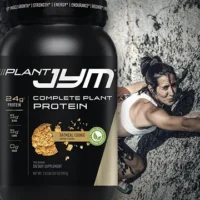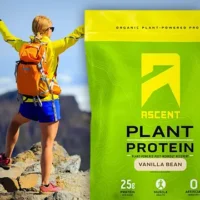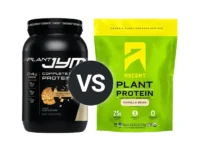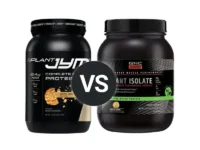Knowledge BaseYou're Questions Answered
What does plant protein powder taste like?
Plant protein powder is a popular supplement made from various plant-based sources, such as peas, rice, hemp, soy, and others. The taste of plant protein powder can vary significantly depending on the specific source, flavorings, and any added ingredients. Below, we explore the general taste characteristics of common types of plant protein powders and considerations that affect their flavor profile.
Taste Characteristics of Common Plant Protein Powders
1. Pea Protein
Pea protein powder is known for its mild, earthy flavor. While not particularly strong, it can have a slightly vegetal taste that some people may describe as similar to peas or legumes. Pea protein is often blended with other ingredients or flavored to mask its natural taste1.
2. Rice Protein
Rice protein powder tends to have a neutral, slightly grainy taste. It is one of the more mild-tasting plant proteins, making it a versatile option for blending with various flavors. However, it can have a chalky texture that may affect the overall taste experience2.
3. Hemp Protein
Hemp protein powder has a distinctive, earthy, and nutty flavor. It can be more robust than other plant proteins and may have a slightly bitter aftertaste. The flavor profile of hemp protein makes it well-suited for mixing with rich, bold flavors like chocolate or coffee3.
4. Soy Protein
Soy protein powder has a mild, slightly nutty flavor. It is relatively neutral, making it easy to blend with other ingredients and flavors. Soy protein is commonly used in flavored protein powders, where its natural taste is often masked by added flavorings4.
Factors Affecting the Taste of Plant Protein Powder
1. Flavorings and Sweeteners
Many commercial plant protein powders are flavored and sweetened to improve their taste. Common flavors include vanilla, chocolate, berry, and more. The type and amount of sweetener used (such as sugar, stevia, or artificial sweeteners) can significantly impact the flavor profile, making the powder sweeter or less sweet depending on the formulation.
2. Additives and Blends
Some plant protein powders are blended with other ingredients, such as natural extracts, fruits, or superfoods, to enhance flavor and nutritional content. These additives can affect the overall taste, making it more complex or introducing new flavor notes.
3. Texture and Consistency
The texture of plant protein powder can also influence the taste experience. Some powders may have a gritty or chalky texture, which can impact the mouthfeel and overall enjoyment of the shake. Blending with liquids like milk, water, or plant-based alternatives can help improve the texture and taste.
- Gorissen, S. H., Crombag, J. J., Senden, J. M., Waterval, W. H., Bierau, J., Verdijk, L. B., & Van Loon, L. J. (2018). Protein content and amino acid composition of commercially available plant-based protein isolates. Amino Acids, 50(12), 1685-1695.
- Hoffman, J. R., & Falvo, M. J. (2004). Protein–which is best? Journal of Sports Science & Medicine, 3(3), 118-130.
- Callaway, J. C. (2004). Hempseed as a nutritional resource: An overview. Euphytica, 140(1-2), 65-72.
- Messina, M., & Messina, V. (2010). The role of soy in vegetarian diets. Nutrients, 2(8), 855-888.
Related Questions
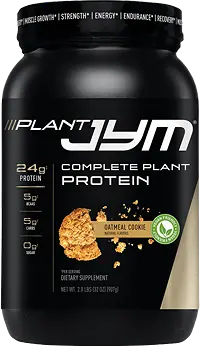
Your Answer
We are a participant in the Amazon Services LLC Associates Program, an affiliate advertising program designed to provide a means for us to earn fees by linking to Amazon.com and affiliated sites.

